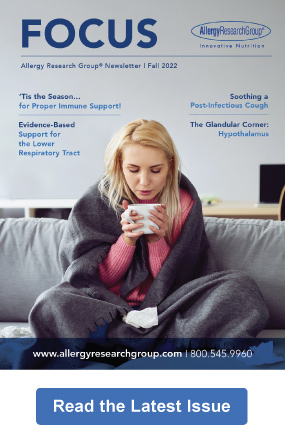Share this post
A blend of bifidobacteria and lactobacilli supports pediatric respiratory and skin health
Achoo! Sniffle, snort! Scratch, scratch, scratch. Is allergy season here again? Or are we stuck in the dregs of cold and flu season? Wait, is there a season where kiddos aren’t dealing with some kind of infection or allergy? Could probiotics help?
The microbiome and children’s health
The past decade has seen a boom in research surrounding the importance of the microbiome, the collection of some 100 trillion organisms found on and in the body.[1] These bacteria, viruses, and fungi – found by far in highest concentrations in the digestive tract – are not only benign to us humans, but are in fact essential to our wellbeing. We now know that a healthy balance of microbes in the gut not only supports digestive health, but can also potentially benefit every major organ system, including the heart,[2] brain,[3] liver,[4],[5] kidneys,[6] bones,[7] and even the skin.[8] Imbalances in the microbiome – a state known as dysbiosis – are associated with a shocking array of diseases.[9],[10]
The microbiome’s influence on health has been studied in all age groups, resulting in the growing popularity of probiotic foods and supplements. Probiotics – or “good bacteria” – have been shown in numerous reviews to be safe and effective in people of various ages – infants included.[11],[12],[13],[14],[15] The efficacy of probiotics is perhaps unsurprising, as fermented foods and the lactobacilli and bifidobacteria they contain have been a part of the human diet for a long, long time.[16]
When combined with a bifidobacterium known as B. lactis UABla-12, L. acidophilus DDS®-1 has shown great promise in supporting the health of children – particularly so in children with eczema (atopic dermatitis)… and acute respiratory infections (ARIs) like the common cold.
A particular probiotic strain known as Lactobacillus acidophilus DDS®-1 has been found to have superior growth and stability, with a high tolerance to acidic environments such as those found in the digestive tract. This allows it to withstand degradation in the stomach and colonize in the intestines.[17] When combined with a bifidobacterium known as B. lactis UABla-12, L. acidophilus DDS®-1 has shown great promise in supporting the health of children – particularly so in children with eczema (atopic dermatitis), a condition which often worsens in the spring when other allergies also kick in,[18] and acute respiratory infections (ARIs) like the common cold.
Eczema (atopic dermatitis)
Understanding that the microbiome affects so much more than just the gut, researchers have been eager to better understand the role that probiotics and microbial ecology may play in alleviating symptoms of allergic conditions like eczema (or “atopic dermatitis,” as doctors call it).
In one noteworthy study, a combination of L. acidophilus DDS®-1 and B. lactis UABla-12 was assessed in children with eczema. In the randomized, double-blind, placebo-controlled clinical trial, 90 children between the ages of one and three years old with moderate to severe eczema were given either the probiotic blend at a dosage of 5 billion colony-forming units (CFUs) twice daily or placebo.[19]
After eight weeks, the children receiving probiotics had on average a 33.7% decrease in their Scoring of Atopic Dermatitis (SCORAD) scores from baseline, whereas their peers receiving placebo had an average decrease of only 19.4%. Those in the probiotic group also used an average of 7.7 fewer grams of steroid cream to manage their eczema symptoms over the course of the eight weeks than those in the placebo group. These improvements in symptom scores and steroid use were also correlated with positive changes in the numbers and types of immune cells found in the blood samples of the participants. (For you immunology buffs, the probiotic group experienced decreases in the percentage of CD4, decreases in the percentage and absolute count of CD25 lymphocytes, and significant increases in the absolute count of CD8 as compared to placebo.)
After eight weeks, the children receiving probiotics had on average a 33.7% decrease in their Scoring of Atopic Dermatitis (SCORAD) scores from baseline, whereas their peers receiving placebo had an average decrease of only 19.4%.
The researchers suggest this shift in immune cell balance may positively help increase the numbers of T helper-1 (Th1) cells – the types of cells needed to fight off bacteria and viruses – while simultaneously decreasing the number of T helper-2 (Th2) cells – the cells that exacerbate allergic responses.[20],[21] Those with a history of atopic (allergic) conditions like eczema, asthma, and hay fever (allergic rhinitis) typically respond well to probiotics and other therapies that increase Th1, decrease Th2, or do both.[22] It’s likely for this same reason that other strains of lactobacilli have also been shown to help reduce the severity of eczema symptoms.[23],[24],[25]
By enhancing Th1, furthermore, probiotics can also help the body fight off bacterial and viral infections – such as those that cause upper respiratory infections (URIs).[26]
Acute respiratory infections
Understanding the Th1-boosting potential of this probiotic combination, researchers designed a randomized, double-blind, placebo-controlled clinical trial to see if the same combination of L. acidophilus DDS®-1 and B. lactis UABla-12 could be of value in reducing the incidence and severity of acute respiratory infections (ARIs), such as the common cold. Two-hundred forty healthy children ages three to 12 years old were enrolled and randomized to receive 5 billion CFUs of the probiotic blend per day or placebo, with the treatment beginning on the first day of the appearance of illness in a member of the participant’s household.[27]
By the end of the study, 64 of 113 children in the probiotic group (57%) and 73 of 112 children in the control group (65%) developed ARIs – so the probiotic blend helped only somewhat in lowering ARI incidence. There was, however, a significant difference in the recovery time between the two groups – the children in the probiotic group missed seven days of daycare/school due to illness, whereas those taking placebo missed nine days (a 22% difference). Likewise, the caregivers of the children taking probiotics missed five days of work, whereas the parents of the children receiving placebo missed an entire week (a 28.5% difference).
Although other studies have also shown select probiotic strains to decrease the incidence of upper respiratory infections, L. acidophilus DDS®-1 may be particularly effective in the prevention and treatment of various infections due to its ability to produce acidophilin, a compound with natural anti-pathogenic potential.[28],[29]
L. acidophilus DDS®-1 may be particularly effective in the prevention and treatment of various infections due to its ability to produce acidophilin, a compound with natural anti-pathogenic potential.
It is possible that the therapy didn’t have a positive impact on of ARI incidence because it was only initiated when a member of the household already had an infection. By this time, the children were possibly already exposed to the infection as well. Oral probiotic therapies are often taken continuously for a period of several days to weeks before more systemic benefits are seen due to the time it takes to shift the microbial balance of the gut, and from this the immune system balance.
As with the eczema study, there were no clinically significant side events associated with the probiotic blend. Indeed, numerous studies have discovered no significant adverse effects associated with these or related strains.[30],[31],[32],[33]
Conclusion
From skin to the deeper organs, probiotic strains like L. acidophilus DDS®-1 and B. lactis UABla-12 have much to offer our kiddos come cold-and-flu season, allergy season, and beyond.
Click here to see References
[1] Turnbaugh PJ, et al. The human microbiome project. Nature. 2007 Oct 18;449(7164):804-10.
[2] Tang WH, et al. Gut microbiota in cardiovascular health and disease. Circ Res. 2017 Mar 31;120(7):1183-96.
[3] Spielman LJ, et al. Unhealthy gut, unhealthy brain: the role of the intestinal microbiota in neurodegenerative diseases. Neurochem Int. 2018 Aug 14;120:149-63.
[4] Han R, et al. Mechanistic and therapeutic advances in non-alcoholic fatty liver disease by targeting the gut microbiota. Front Med. 2018 Dec;12(6):645-57.
[5] Altamirano-Barrera A, et al. The role of the gut microbiota in the pathology and prevention of liver disease. J Nutr Biochem. 2018 Mar 16;60:1-8.
[6] Xu KY, et al. Impaired renal function and dysbiosis of gut microbiota contribute to increased trimethylamine-N-oxide in chronic kidney disease patients. Sci Rep. 2017 May 3;7(1):1445.
[7] McCabe L, et al. Prebiotic and probiotic regulation of bone health: role of the intestine and its microbiome. Curr Osteoporos Rep. 2015 Dec;13(6):363-71.
[8] Erdman SE, Poutahidis T. Probiotic ‘glow of health’: it’s more than skin deep. Benef Microbes. 2014 Jun 1;5(2):109-19.
[9]Tojo R, et al. Intestinal microbiota in health and disease: role of bifidobacteria in gut homeostasis. World J Gastroenterol. 2014 Nov 7;20(41):15163-76.
[10] Gagliardi A, et al. Rebuilding the gut microbiota ecosystem. Int J Environ Res Public Health. 2018 Aug 7;15(8):1679.
[11] Bernardeau M, et al. Beneficial lactobacilli in food and feed: long-term use, biodiversity and proposals for specific and realistic safety assessments. FEMS Microbiology Reviews. 2006;30:487-513.
[12] Adams MR. Safety of industrial lactic acid bacteria. J Biotechnol. 1999;68:171-8.
[13] Borriello SP, et al. Safety of probiotics that contain lactobacilli or bifidobacteria. Clin Infect Dis. 2003;36:775-80.
[14] Ishibashi N, Yamazaki S. Probiotics and safety. Am J Clin Nutr. 2001;73(2 Suppl):465S-70S.
[15] Salminen S, et al. Demonstration of safety of probiotics — a review. Int J Food Microbiol. 1998;44:93-106.
[16] Butel M-J, et al. The developing gut microbiota and its consequences for health. J Dev Orig Hlth Dis. 2018:1-8.
[17] Frese SA, Hutkins RW, Walter J. Comparison of the colonization ability of autochthonous and allochthonous strains of lactobacilli in the human gastrointestinal tract. Adv Microbiol. 2012;2:399-409.
[18] Krämer U, et al. Seasonality in symptom severity influenced by temperature or grass pollen: results of a panel study in children with eczema. J Invest Dermatol. 2005 Mar;124(3):514-23.
[19] Gerasimov SV, et al. Probiotic supplement reduces atopic dermatitis in preschool children: a randomized, double-blind, placebo-controlled, clinical trial. Am J Clin Dermatol. 2010;11:351-61.
[20] Machura E, et al. Staphylococcus aureus skin colonization in atopic dermatitis children is associated with decreased IFN-gamma production by peripheral blood CD4+ and CD8+ T cells. Pediatr Allergy Immunol. 2008;19:37-45.
[21] Bernaldo de Quiros E, et al. The role of regulatory T cells in the acquisition of tolerance to food allergens in children. Allergol Immunopathol (Madr). 2018 Nov – Dec;46(6):612-8.
[22] Peterson JD, et al. Glutathione levels in antigen-presenting cells modulate Th1 versus Th2 response patterns. Proc Natl Acad Sci U S A. 1998 Mar 17;95(6):3071-6.
[23] Kalliomäki M, et al. Probiotics in primary prevention of atopic disease: a randomised placebo-controlled trial. Lancet. 2001 Apr 7;357(9262):1076-9.
[24] Zhao M, et al. Treatment efficacy of probiotics on atopic dermatitis, zooming in on infants: a systematic review and meta-analysis. Int J Dermatol. 2018 Jun;57(6):635-41.
[25] Hoang BX, et al. Lactobacillus rhamnosus cell lysate in the management of resistant childhood atopic eczema. Inflamm Allergy Drug Targets. 2010 Jul;9(3):192-6.
[26] Torii A, et al. Lactobacillus Acidophilus strain L-92 regulates the production of Th1 cytokine as well as Th2 cytokines. Allergol Int. 2007;56(3):293-301.
[27] Gerasimov SV, et al. Role of short-term use of L. acidophilus DDS-1 and B. lactis UABLA-12 in acute respiratory infections in children: a randomized controlled trial. Eur J Clin Nutr. 2016;70:463-9.
[28] Shahani KM, et al. Natural antibiotic activity of Lactobacillus acidophilus and bulgaricus. II. Isolation of acidophilin from L. acidophilus. Cult Dairy Prod J. 1977;12:8-11.
[29] Goyal N, et al. Int J Microbiol. 2008;5:1277-82. TITLE?
[30] Frese SA, et al. Comparison of the colonization ability of autochthonous and allochthonous strains of lactobacilli in the human gastrointestinal tract. Adv Microbiol. 2012;2:399-409.
[31] Pakdaman MN, et al. The effects of the DDS-1 strain of lactobacillus on symptomatic relief for lactose intolerance – a randomized, double-blind, placebo-controlled, crossover clinical trial. Nutr J. 2016;15:56.
[32] Ayebo AD, et al. Effect of ingesting Lactobacillus acidophilus milk upon fecal flora and enzyme activity in humans. Milchwissenschaft. 1980;35:730-3.
[33] Gerasimov SV. Probiotic prophylaxis in pediatric recurrent urinary tract infections. Clin Pediatr (Phila). 2004;43:95-8.
The information provided is for educational purposes only. Consult your physician or healthcare provider if you have specific questions before instituting any changes in your daily lifestyle including changes in diet, exercise, and supplement use.
Share this post
Dr. Erica Zelfand
Related posts
Enzymes to Help with Accidental Gluten Consumption
Many products that claim to support gluten digestion might not be fully doing the job! Celiac and other types of gluten sensitivity Celiac disease (CD) is the most studied and broadly recognized disease associated with the immune reaction to gluten consumption. Celiac disease is a multifactorial disease characterized by an inflammatory response to ingested…
Bile Acids: Beyond Gut Health
The role bile acids play in metabolic and liver health The use of bile therapeutically dates to ancient times. Bile from many different animals, and even humans in the time of battle, have record in traditional Chinese medicine (TCM) beginning in the Zhou dynasty from 1046-256 BCE.[1] In TCM, bile acids are used for…
Are Gluten-Free Diets Just a Fad?
Understanding celiac disease, wheat allergy, non-celiac gluten sensitivity, & other gluten-related disorders It used to be quite rare to meet somebody who avoids gluten – the protein found in wheat, rye, spelt, semolina, and triticale. Nowadays, however, gluten free dieting is all the rage. In 2016, 8% of North Americans followed a wheat- or…
Fighting Depression and Anxiety Through the Gut
Vagus nerve stimulation for mood support (Part 2 of 2) Last week’s post examined the vagus nerve (the tenth cranial nerve) and the important role it plays in connecting the body to the brain. We explored how breath, laughter, and exercise all “tickle” the nerve to send soothing, calming signals to the brain and…
Integrative Perspectives on ADHD (Video)
As school is back in full force, and we are doing our best to “stay home, stay safe”, it can be a challenge for even the most focused individuals to maintain sustained attention for the projects at hand. Herein, we take a look specifically at the disorder known as Attention Deficit Hyperactivity Disorder (ADHD),…
Ivy Leaf for Lung Health
A look at ivy leaf for lung health Rattle, click, puff, inhale. These are the sounds of a person using an inhaler (or “puffer”) to support their respiratory health. The life-saving medicine found in rescue inhalers often comes from a class of drugs known as beta (β) agonists. By mimicking the effects of epinephrine…
Categories
- Botanicals (56)
- GI Health (53)
- Healthy Aging (121)
- Immune Support (39)
- In The News (39)
- Kids Health (21)
- Stress and Relaxation (50)
- Uncategorized (1)
- Video (9)
- Vitamins & Minerals (51)




